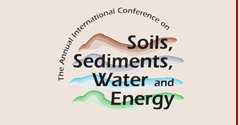Abstract
Adherence to a standard groundwater sampling method is a fundamental requirement for the accurate assessment of contaminated sites. Confidence in expensive analytical results relied upon to evaluate contaminant fate, transport and risk potential is lost when possible sampling error is suspected. A correlation between suspended solids content and elevated fuel oil hydrocarbon concentrations was observed at sites where aggressive groundwater sampling methods were employed. This relationship was not observed when suspended solids were removed via filtration or at gasoline release sites, independent of filtration. The higher octanol-water coefficient of middle distillate petroleum compounds was attributed to the additive effect imparted by suspended solid-bound contaminants on dissolved phase concentrations. To further explore potential groundwater sampling induced error associated with aggressive purge and sample collection flow rates independent of turbidity, a controlled experiment was conducted over a range of groundwater flow rates at a gasoline impacted site. Volatile petroleum hydrocarbon (VPH) and geochemical parameter levels varied substantially between sampling treatments that ranged from 50 to 1,000 ml/min (including hand bailing) despite achieving stabilization of the geochemical parameters during each treatment. Sample precision was greatest for the 100 ml/min purge and sample flow rate. Possible sources of VPH concentration variability among the various treatments are discussed along with the importance of developing and adhering to site-specific sampling protocols, and the challenge of not doing so to trend analysis.
Recommended Citation
Tease, Bruce and Dowling, Toby
(2012)
"The Influence of Groundwater Sample Flow Rate on Suspended Solids, Geochemical and Contaminant Concentrations and its Effect on Trend Analysis,"
Proceedings of the Annual International Conference on Soils, Sediments, Water and Energy: Vol. 17, Article 15.
Available at:
https://scholarworks.umass.edu/soilsproceedings/vol17/iss1/15
